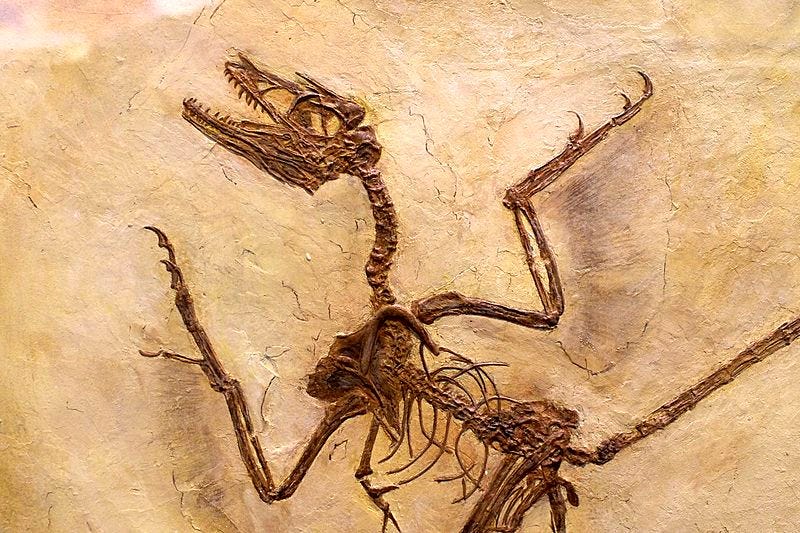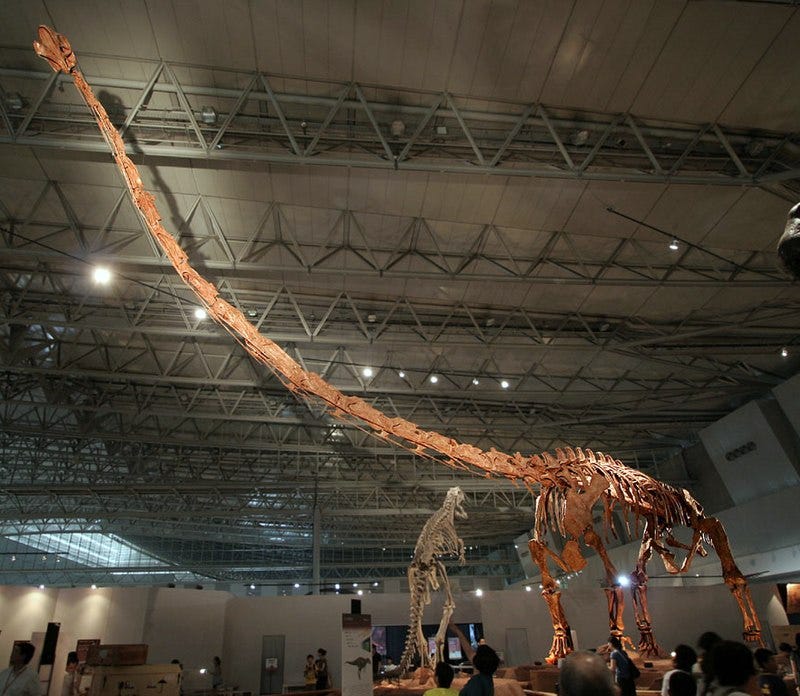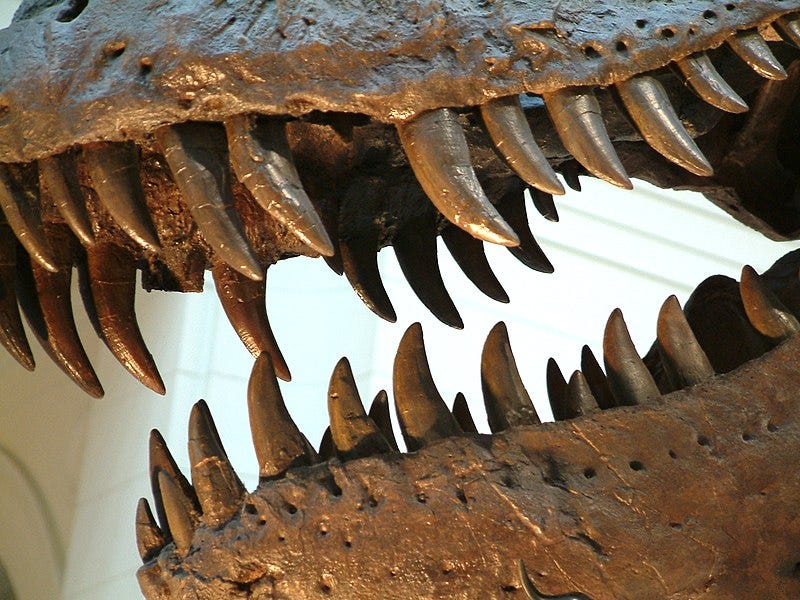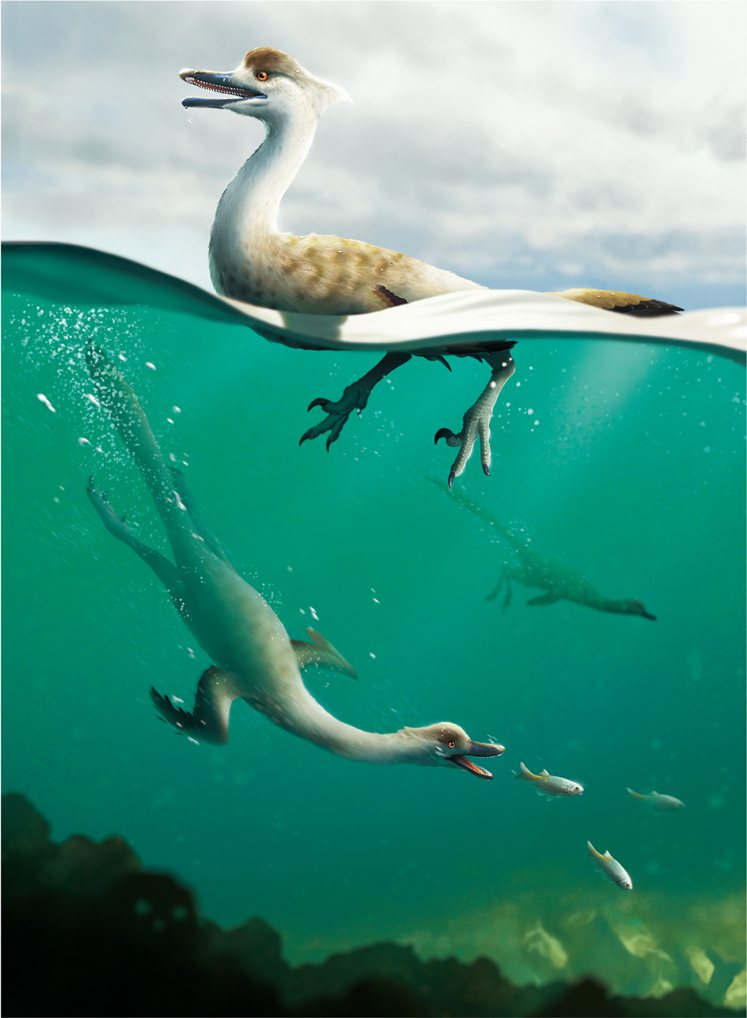Discoveries of Dinosaurs and Ancient Creatures in Early 2023
Written on
In our quest to uncover the mysteries of Earth's history, few topics intrigue us as much as dinosaurs. These remarkable beings, ranging from enormous titans to armored giants and fierce predators, once inhabited every part of the globe.
In this article, we will delve into some of the most significant discoveries related to dinosaurs and other ancient creatures from the beginning of 2023. While our primary focus will be on dinosaurs, one notable find from Australia particularly stands out.
Fans of "The Lord of the Rings" might remember the giant eagles that carried Gandalf. Surprisingly, a real-life eagle species, reminiscent of those mythical creatures, has recently been discovered in Australia.
Let’s first explore this fascinating bird before diving into the latest dinosaur discoveries!
#1. Newly identified eagle species akin to LOTR's giant eagles may have carried off small prey

Welcome to the extraordinary realm of ancient Australia, where formidable creatures ruled the skies. A recent discovery by scientists revealed an extinct eagle species in southern Australia, reminiscent of the giant eagles from J. R. R. Tolkien’s The Lord of the Rings.
This eagle, named Gaff’s powerful eagle, or Dynatoaetus gaffae, existed between 50,000 and 700,000 years ago and was unearthed from a deep 56-foot vertical cave in South Australia. With talons measuring around 12 inches and a wingspan of nearly 10 feet, it was the largest bird of prey in Australia.
While not as colossal as the fictional eagles in LOTR, Gaff’s powerful eagle possessed the strength to capture prey the size of a hobbit with its massive talons.
During its reign in the Australian skies, the continent hosted other gigantic creatures, including enormous kangaroos, large flightless birds, massive monitor lizards, and bear-like marsupials.
Researchers believe that Gaff’s powerful eagle likely hunted living kangaroos, thanks to its robust legs, which enabled it to carry sizeable prey.
Only two other extinct eagle species are known to be larger than Gaff’s powerful eagle.
In addition to Gaff’s powerful eagle, scientists have recently identified another new eagle species, Archaehierax sylvestris, believed to have hunted large koalas approximately 25 million years ago.
These amazing discoveries enhance our understanding of Australia’s unique and diverse prehistoric biodiversity.
So, the next time you revisit LOTR, keep in mind Gaff’s powerful eagle!
#2. Mammal bones discovered intact in a dinosaur's stomach

Over 120 million years ago, the Microraptor dominated the skies as an adept hunter, gliding between trees to catch small birds, fish, and lizards. Recently, a groundbreaking discovery has reshaped our understanding of its diet.
Scientists found a complete mammal foot preserved within the stomach of a Microraptor fossil, providing direct evidence that this creature consumed prehistoric mammals, early relatives of humans.
This unique find marks the first instance of discovering a mammal in a dinosaur's stomach.
Experts believe the mammal was small and ground-dwelling, resembling a mouse or an opossum, making it an easy target for the tree-dwelling Microraptor. The foot was swallowed whole, with additional unidentified bones found in the rib cage, suggesting that more of the mammal was consumed.
David Hone, a paleontologist from Queen Mary University, London, stated that while it may not be as terrifying as anything depicted in Jurassic Park, it remains a significant discovery.
Investigating the gut contents of dinosaurs offers invaluable insights into their diets. This find eliminates uncertainties regarding what these creatures consumed, confirming that the Microraptor was a fierce hunter that dined on mammals.
#3. Jurassic dinosaur boasted a neck as long as a semi-trailer truck

Prepare to be amazed! Scientists have determined that a dinosaur had the longest neck of any known species.
This creature, known as Mamenchisaurus sinocanadorum, roamed East Asia during the Jurassic period approximately 162 million years ago. Discovered in 1987, it was only recently that researchers calculated its neck length.
The neck measured an astonishing 50 feet—equivalent to that of a semi-trailer truck!
This long neck would have been advantageous for foraging vegetation, the primary component of its diet.
Though only a few bones, including vertebrae and a rib, were found, scientists estimated the neck's length by comparing it to similar dinosaurs.
They found that Mamenchisaurus had 18 vertebrae in its neck, consistent with other closely related species, leading to an estimated neck length of 49.5 feet.
However, having such a long neck came with challenges. To support its weight, Mamenchisaurus developed adaptations.
CT scans revealed that its vertebrae contained significant air pockets, making them lighter and more manageable. Additionally, it had 13-foot-long ribs that provided extra support, ensuring stability and reducing injury risks.
According to Andrew Moore, a paleontologist at Stony Brook University, “Our analyses give us confidence that Mamenchisaurus sinocanadorum had 18 vertebrae in its neck, as close relatives with more complete skeletons all have 18 cervical vertebrae.”
Natalia Jagielska, a paleontologist from the University of Edinburgh, noted, “Many remarkable deposits containing long-necked sauropods are found throughout China,” indicating that this discovery might be just the beginning.
Who knows what other surprises await us in the fossil records?
#4. T. rex undergoes a makeover: Study reveals dinosaurs had scaly lips covering their teeth

A recent study has transformed our understanding of some of the most iconic dinosaurs!
You might envision dinosaurs like T. rex and Velociraptor as having fearsome, lipless mouths displaying sharp teeth, but it appears these creatures may have actually possessed scaly lips covering their mouths.
This revelation makes them appear less intimidating!
The study analyzed tooth structure, wear patterns, and jaw morphology of both lipped and lipless reptile groups. Researchers discovered that these carnivorous giants had oral anatomy resembling that of lizards rather than crocodiles, featuring lizard-like tissues with scaly lips over their teeth, which were likely not muscular like those in mammals.
Dr. Mark Witton, a paleontologist from the University of Portsmouth, stated, “We are gaining a clearer understanding of many aspects of dinosaur appearance.”
The findings from this study offer new perspectives on how we reconstruct the soft tissues and appearance of dinosaurs such as T. rex and Velociraptor. This information is critical for understanding their feeding habits and overall evolutionary trends.
But there's more!
These findings also impact how dinosaurs are portrayed in media. Many representations, including the T. rex from Jurassic Park, are actually inaccurate. Dinosaur teeth were not too large to be covered by lips and were no larger, relative to skull size, than those of contemporary lizards.
The study's authors suggest that dinosaur artists may have preferred the aesthetic of lipless dinosaurs for dramatic effect. After all, what could be scarier than a giant creature with exposed rows of sharp teeth?
Thus, the image of a lipless, toothy T. rex may soon be outdated. As researchers uncover new insights, we may need to rethink many established beliefs about these prehistoric giants.
#5. The first swimming dinosaur discovered in Mongolia

Paleontologists have made an astonishing discovery of a new dinosaur species in Mongolia—a swimming dinosaur!
Introducing Natovenator polydontus, the "many-toothed swimming hunter," a small dinosaur, about a foot long, that swam in the waters of Mongolia around 71 million years ago.
Natovenator is closely related to Velociraptors and other predatory dinosaurs. Its unique features include a streamlined body and elongated jaws filled with tiny teeth, making it a distinctive creature.
The discovery of Natovenator was not merely a coincidence. Its fossilized remains were found at Hermiin Tsav in the Gobi Desert, a site renowned for preserving various dinosaur species and other ancient life forms.
What’s even more remarkable is that Natovenator was specifically adapted for an aquatic lifestyle. Its long jaws and small teeth were ideal for capturing tiny prey in the water, while its streamlined ribs enhanced swimming efficiency in the Cretaceous lakes and streams.
This adaptation is unprecedented among known dinosaur species. Can you envision a dinosaur gracefully swimming in water?
While we cannot observe Natovenator in action, studying its fossil remains is an exhilarating experience that highlights the incredible variety of life that once roamed our planet.
Every new dinosaur species discovered contributes to our understanding of its fascinating evolutionary history, and Natovenator is no exception.
Which of these discoveries excites you the most? Share your thoughts in the comments.
If you enjoy learning about dinosaurs, check out the following article that challenges the popular portrayal of T. rex in the Jurassic Park franchise.